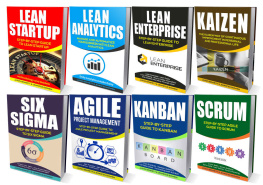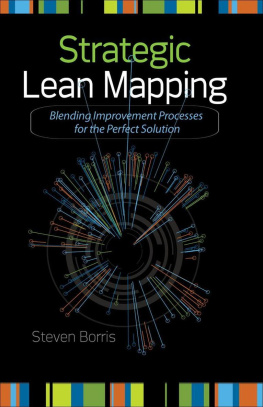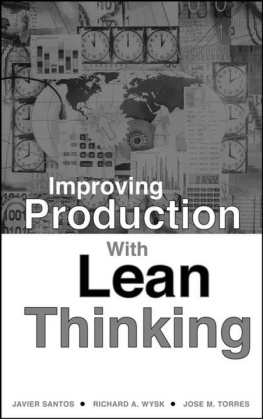1. Introduction
The TPS has become the reference of modern high performance manufacturing systems. It has been spread and adopted in Europe under the American label of Lean Manufacturing (LM) also among other industries than the automotive because of its superior performance. Apart of the Kaizen-based continuous improvement management philosophy, the underlying TPS theory bases on a Just-in-time (JIT) type manufacturing approach. This manufacturing approach bases on flow on pull with Heijunka-pitch scheduling, i.e. self-controlled mixed-product cells, which performance is by far higher than those of traditional computer-controlled and optimized MRP 2-type (manufacturing resource planning) or ERP-type (enterprise resource planning) systems relying mainly on push batch & queue (B&Q) manufacturing. Indeed, Lean stands in contradiction to the Western high performance thought of B&Q manufacturing of large batches to minimize setup downtimes and reducing cost per piece, exploiting equipment output, keeping blue collar workers busy and hurrying, i.e. showing an apparent high productivity. But the high level of busyness may contain a lot of non-necessarily needed activities, such as searching, bringing, handling, piling, waiting, so-called non-value add activities or inefficiencies which the Japanese call Muda (waste). Fujio Cho has defined waste as anything other than the minimum amount of equipment, materials, parts, space, and workers time, which are absolutely essential to add value to the product. Instead of a hurrying activism, the Japanese prefer not a calm but a waste-less sequence of activities at a constant pace resulting at the end of the day in a higher efficiency and efficacy.
Another difference is the concept of built-in quality of the TPS, every employee contributing to guarantee error-free products not necessitating final inspection. Exactly the final check has been typical of Western production systems to guarantee quality, scrapping defective products at the end of the line bearing the highest value content. The Japanese even foster the culture to allow blue collar workers to stop the assembly transfer line in case they discover a non-conformity. Until not many years ago, such a contentious behavior in a Western automotive plant would have lead to the immediate consequence of being fired. At the base to implement such an error-free culture stands the SPF, allowing to discover defects and to act immediately solving the problem. SPF and Jidoka therefore go hand in hand to guarantee a JIT zero mistake culture which allows on-time-delivery (OTD). The cultural change needed is drastic but the resulting performance improvement showed the benefit [].
During the last two decades also the industry logic changed profoundly. Globalization revolutionized the way of thinking. Globalization brings not only more opportunities through a larger world market, it entails also more competition and therefore a threat. Different globalization forms are observable bearing different underlying business types with different rationales [].
To have success in todays intensive competitive environment not only the product has to be the best; to provide a unique selling proposition, also the price has to be aligned as well as the ancillary boundary conditions, such as immediate availability and service have to be observed. The SPQR model summarizes these requirements [).
Fig. 1.1
SPQR model showing systemic effects between the cardinal objectives [from ]
Under the Lean label, the TPS has been described and divulged in several books, e.g. [] showing the missing of a driving high performance-demanding automotive industry. We will not investigate the further root causes regarding the scarce presence of Lean courses. However, we will put the attention to bridge the lack of divulgation of the underlying theoretic and implicit manufacturing framework of Lean. In order to educate state of the art production managers and engineers, the production theory of TPS has to be taught, opening the academic dimension of Lean not only for students but also for already field-proven practitioners being in responsible positions, often consisting of engineers with now obsolete knowledge. It is not the responsibility of industry to educate production managers with Lean Sensei or Lean Six Sigma Black Belt courses aligning them with state-of-the-art knowledge.
This compendium intends to bridge application and theory by following a Cartesian-type logic of reasoning to model Lean, although it does not pretend to be comprehensive in all topics. It begins by presenting a new cognitive-oriented, systemic-based Lean model, i.e. describing the systems-based functioning of Lean. It is modeled by a new, structured mono-pillar representation of the TPS, where JIT and Jidoka are not separately shown in two pillars, as usual [ is only for completeness; it introduces into how to deploy and maintain a Lean system and shows some differences between Lean and the new envisaged Industry 4.0 revolution.
The focus of this compendium is to give an introductory but solid, at the same time concise fundament about manufacturing theory leading naturally to the TPS model. It provides the mathematical evidence of the superior performance of the TPS. To do so, simplifications have to be made; indeed, we will assume no quality issues, no breakdowns, no lack of material, i.e. ideal manufacturing conditions, being breakdowns and quality issues rather a consequence of poor management how to run a plant, which, by the way, Toyota has put a lot of effort to solve. Further, quality and how to generate quality is essential within Toyota, having led to the concept of autonomation (Jidoka), i.e. automatic but at the same time foolproof equipment, allowing the operator to manage several workstations at the same time (Chaku chaku). Although the aspect how to generate quality is central to the TPSindeed, SPF allows to generate quality by bringing defects to the surface letting inefficiencies (Muda) emergewe are interested here in the working mechanism of the manufacturing system, becoming product quality and equipment uptime, such as other requirements, each one just an aspect of the JIT approach. This might be controversial, being Jidoka and total productive maintenance (TPM) at the base of Lean. In this book however, the focus will be put primarily on the formalized governing JIT functioning of the TPS. This compendium has to be seen as a first essay, for sure improvable and extendable, to give not only students a simplified but quite comprehensive mathematical view about Lean, educating modern production managers.
References and Selected Readings
Womack, J.P., Jones, D.T., Roos, D.: The Machine that Changed the World. Free Press, New York (1990)
Rttimann, B.: Modeling Economic Globalizationa Post-Neoclassic View on Trade and Competition. MV-Wissenschaft, Mnster (2007)
Rttimann B, 2011, The Globalizing Aluminium IndustryLean Supply Chains Will Shape a New Industry Logic, Part 2, ALUMINIUM 87, 9, Giesel Verlag, Hannover
Hagen, H., Rttimann, B.: The Automotive Marketthe New Challenge for the Aluminium Industry, ALUMINIUM 80, 3/4. Giesel Verlag, Hannover (2004)
Rttimann B.: Globalization and the strategic challenge. Presentation held at: Swiss-Swedish innovation initiative, EMPA Dbendorf, September 25 (2013)
Rttimann, B.: The Central Importance of Quality, ALUMINIUM 77, 7/8. Giesel Verlag, Hannover (2001)











